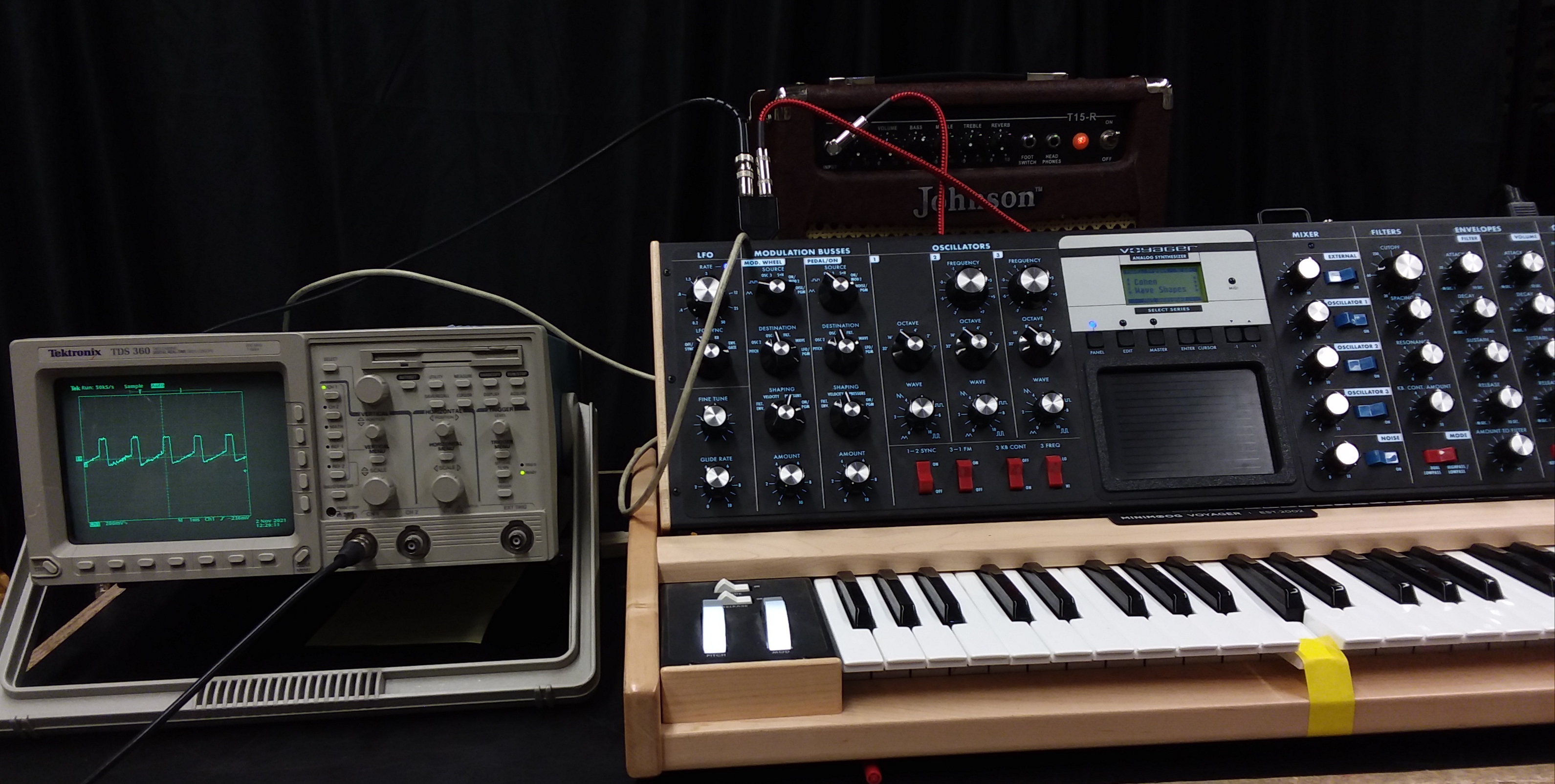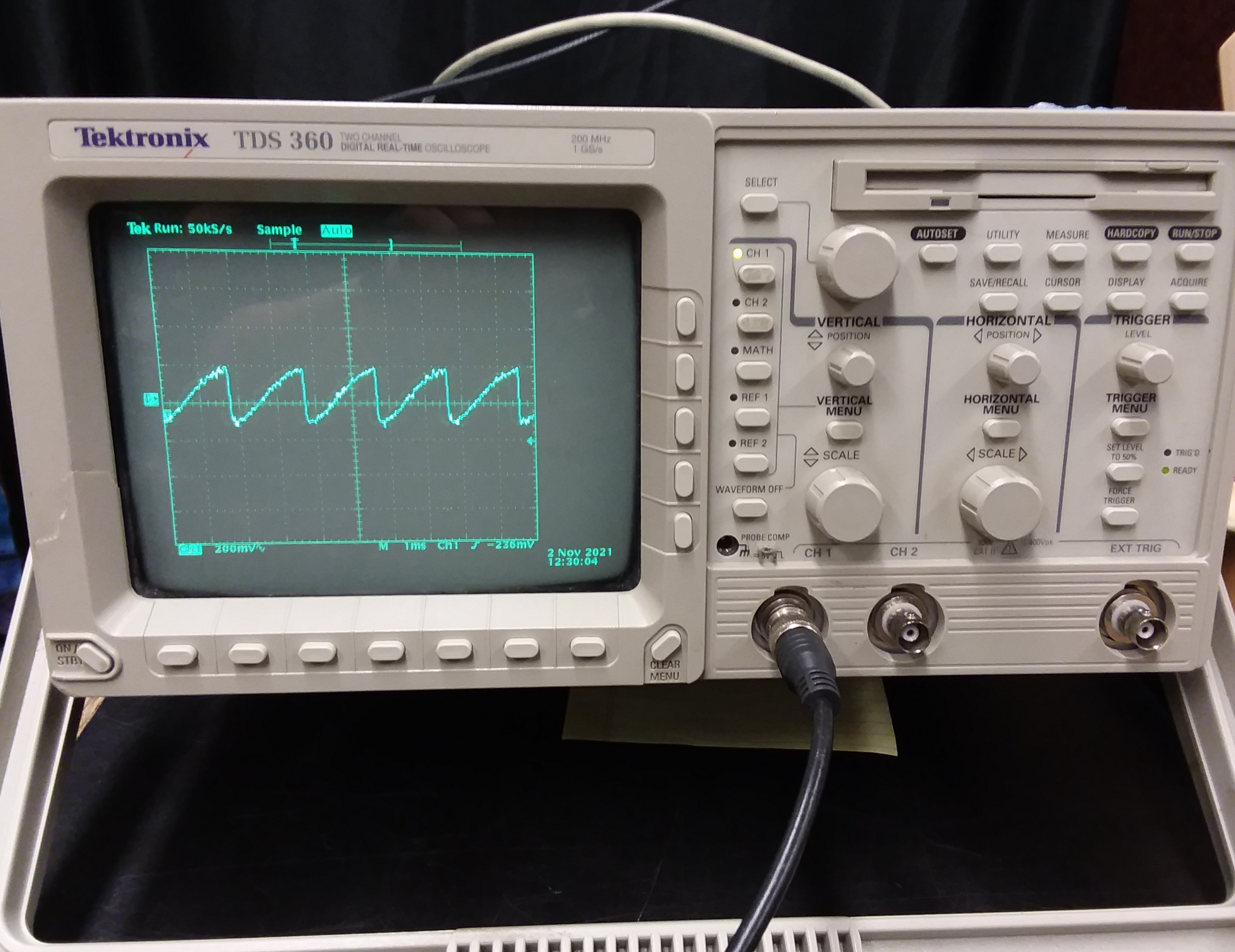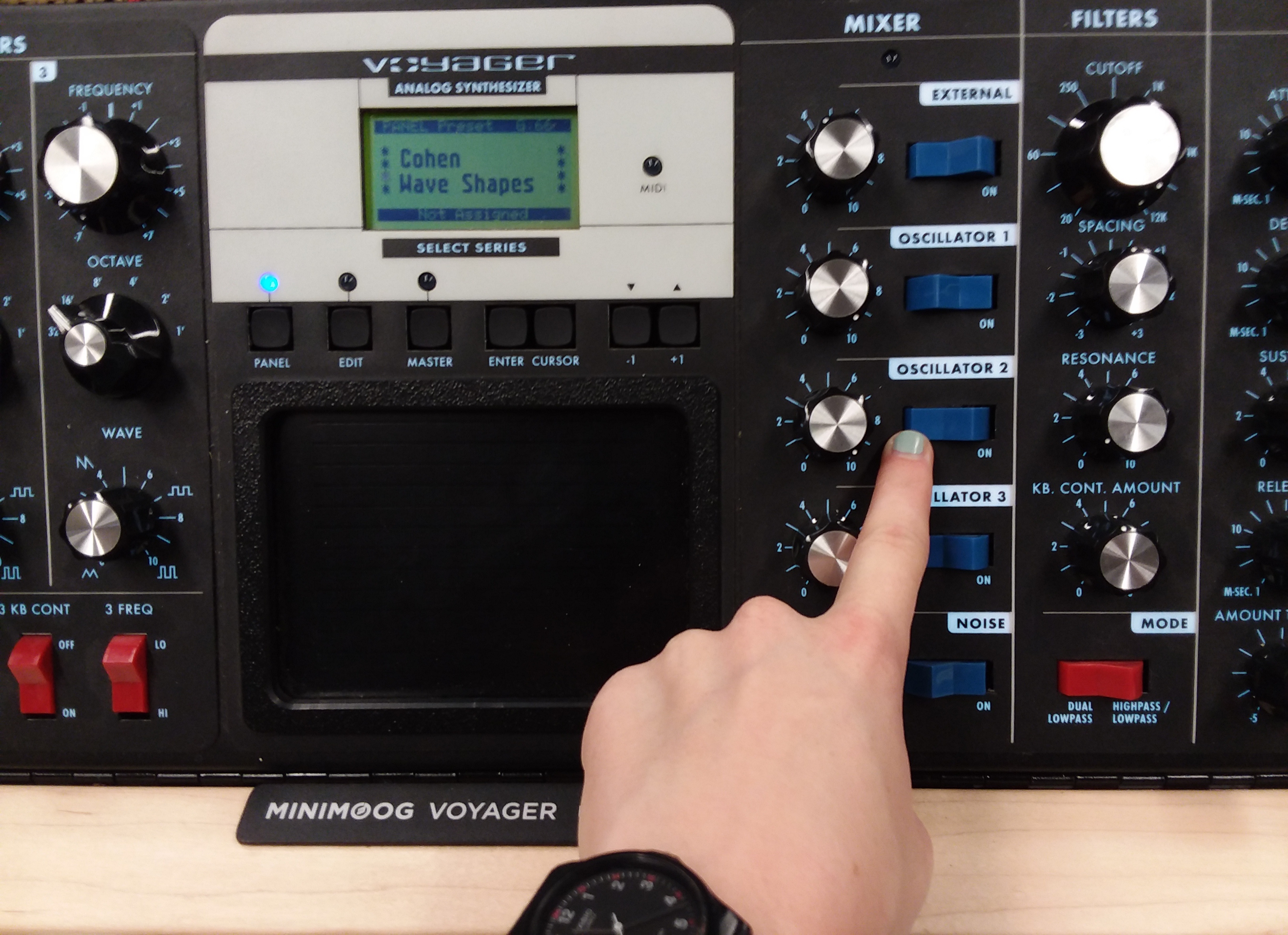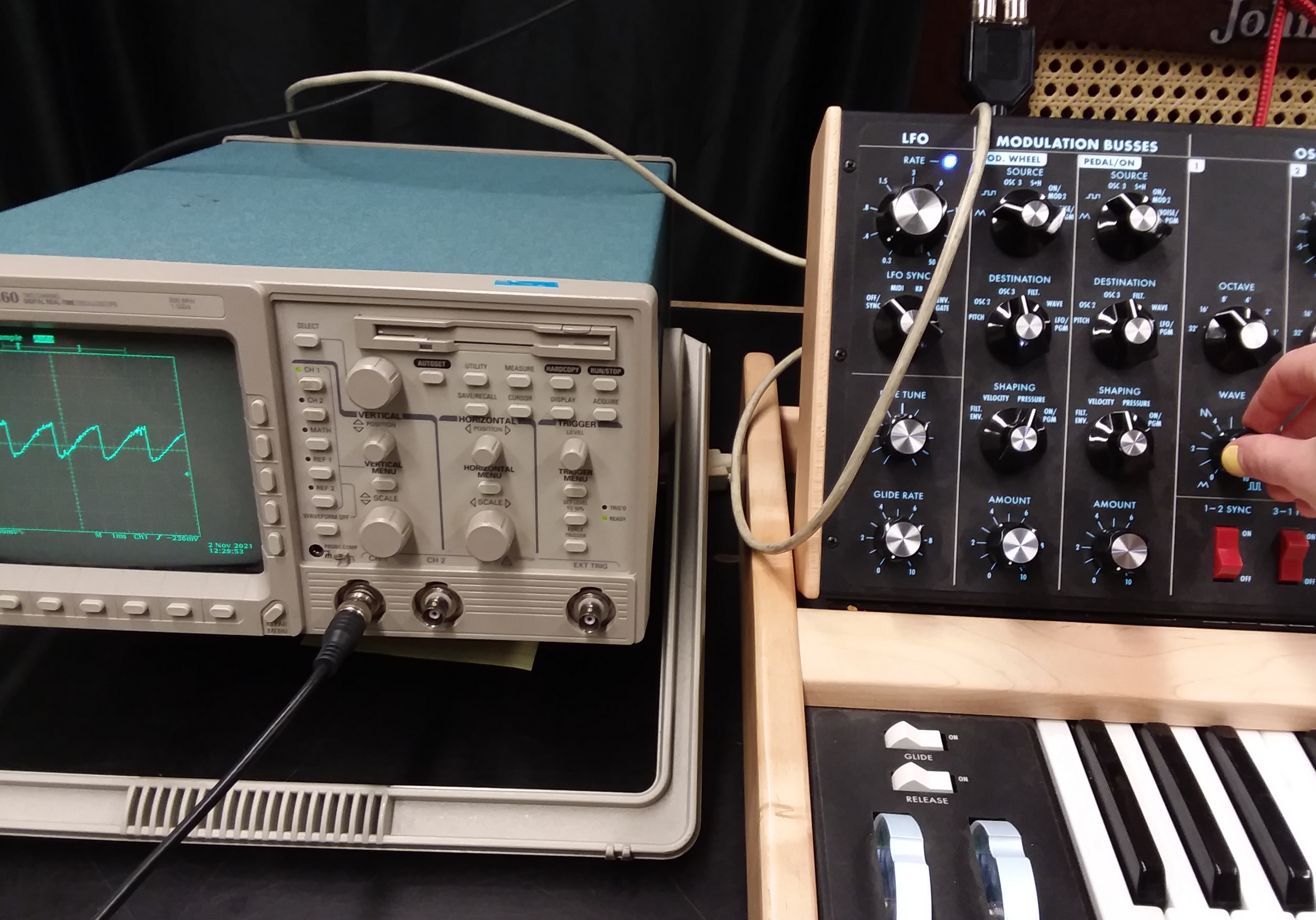Difference between revisions of "Moog Synthesizer"
From UO Physics Demonstration Catalog
| Line 1: | Line 1: | ||
{{NewDemo|subject=OWS|topic=Waves|file1=moog1.jpg|file2=moog3.jpg}} | {{NewDemo|subject=OWS|topic=Waves|file1=moog1.jpg|file2=moog3.jpg}} | ||
This is a pretty fun demo showing the cool sounds a Moog synthesizer makes on an oscilloscope. To set up, you want two outputs from the L output jack of the Moog, one going to an amplifier and one going to the oscilloscope: | Great for Physics of Sound and Music. Especially if you have a student in the class that can mess with it. This is a pretty fun demo showing the cool sounds a Moog synthesizer makes on an oscilloscope. To set up, you want two outputs from the L output jack of the Moog, one going to an amplifier and one going to the oscilloscope: | ||
[[File:moog2.jpg|align=center|600px]] | [[File:moog2.jpg|align=center|600px]] | ||
Revision as of 16:09, 29 December 2022
Return to Waves
Description:
Great for Physics of Sound and Music. Especially if you have a student in the class that can mess with it. This is a pretty fun demo showing the cool sounds a Moog synthesizer makes on an oscilloscope. To set up, you want two outputs from the L output jack of the Moog, one going to an amplifier and one going to the oscilloscope:
Make sure the Moog is set to patch "G 66", which is named "Cohen Wave Shapes." To scroll through patches on the synthesizer, use the "Enter" button below the screen display to jump between patch banks A-G, and then use the +/- buttons to get to patch 66 within the "G" patch bank. Switch oscillator 2 and 3 to "off", so it looks like the picture below:
Now, you can use the knob controlling wave shape for oscillator 1 to show a basic wave form changing on the oscilloscope:
To show more complex wave shapes, just switch oscillators 2 and 3 back on. There are also hundreds of other patches on this synthesizer -- try playing with some more complex ones and see how their wave shapes look compared to this pictured simple saw wave. If you're confused about where to find the buttons, knobs, and switches described above, the synthesizer manual (located in the outer pocket of the synthesizer case) has good diagrams and sections in it that show you where things are located and walks you through their functions. And if you want to be slightly pedantic about it when showing the demo, Moog is pronounced like "mohg" (rhymes with rogue).
Location:
- MiniMoog Voyager: Black cabinet
- Oscilloscope: Black cabinet
- Amplifier: H-3
- BNC Cables (for oscilloscope): Wall I
- BNC to 1/4" and 1/4" to 2 outputs converter: Dr. 66
- 1/4" cable: Wall G




